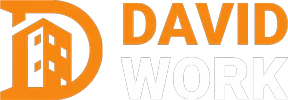Buying a home is a daunting process for everyone, and the factors you need to consider put enough on your plate already. Thinking about the location, the age of the house, possible maintenance issues, and the price you’ll offer is no easy feat. In addition, if you found the place you’ve fallen in love with and decide that it’s the one, you might have to compete with other buyers, adding to the stress plaguing you since Day One.
But alas, the factors above aren’t the only ones you need to consider. Buying a home is an earnest endeavor, and making one mistake in the process can result in long term misery, if not a lifetime of it. Now, that may sound like an exaggeration, but in some cases, overlooking an important factor does lead to a disaster. It can be safety-related, security-related, health-related, or cost-related.
That said, never overlook these extra factors when you buy a home:
1. HOA Restrictions
The homeowners association in the area you’re moving into can have rules your old place didn’t have. For example, a “No Pets Allowed” policy or a restriction on home-based businesses. If you didn’t check the HOA rules and regulations before buying the home, you’d realize them when it’s too late.
The seller or conveyancer should point out the HOA restrictions to you before the finalization of the offer occurs. But often, restrictions are only disclosed after offers have been accepted. Avoid this by opening up about restrictive covenants before making your offer. If you already made an offer, but the closing contract is still unsigned, you can still pull out the purchase if the restrictions affect your lifestyle.
2. Extensions or Outbuildings
If you see rooms or buildings that don’t look like they’re originally part of the structure, ask the seller if they obtained planning permission for those. If they didn’t, you could be liable. Even if the seller isn’t the first owner of the home and doesn’t make the alterations, any extensions or outbuildings should still have a paper trail from the previous owners. If the seller can’t show you a planning permission proof, negotiate so that they’d pay for the lack of that documentation.
3. Water Pressure
Aside from leaks, rusting pipes, and other common plumbing issues, gauge the water pressure as well. Ask the seller to demonstrate all the water fixtures for you. Just because the showers and faucets look modern and new doesn’t mean they have good water pressure. Skipping to test them can result in costly repairs when you’ve already moved in.
4. Indoor Air Pollutants
In newly built homes, asbestos may be present in the air. That mineral is hazardous for the health when inhaled in large amounts. Thankfully, it can be detected through an asbestos assessment and inspection. The seller should shoulder it, though, and they’re required to inform you if asbestos is indeed detected in the home.
Radon, another common indoor air pollutant, can also cause serious health problems, including cancer, when ingested in large amounts. But it can also be detected early on through radon testing.
Check for molds as well. Though molds aren’t usually dangerous, they can aggravate respiratory symptoms in those with preexisting lung conditions already. Not to mention they’re unsightly and unsanitary.
5. Electrical Issues

When you’re touring a house in the daytime, you won’t likely turn on the lights, but it’s very important to do so. Test every light switch in every room. You shouldn’t hear buzzes feel grounded, or see sparks that aren’t normal. To avoid dealing with a serious electrical problem, have the electrical system covered in your home inspection procedure.
6. Mosquitoes
Mosquitoes are probably the last thing in your mind when buying a home. Those little insects don’t often cause serious problems beyond the itch anyway. But if an infected mosquito bites you, you can suffer a potentially life-threatening disease, such as dengue fever or Triple E. So check if the location of your new home is among the cities with the worst mosquito population. If it is, avail of professional mosquito control services before moving in.
7. Other Health and Safety Factors
You’ve probably considered the common health and safety factors already, such as the structural integrity, cleanliness, and fire hazards in the home. Still, it wouldn’t hurt to double-check. For example, inspect the vents and the HVAC system for blockages as well. A blockage can indicate a carbon monoxide problem, which is another health hazard.
A thorough home inspection will detect most of these factors, but don’t depend on everything on it. Instead, be a responsible and meticulous home-buyer by ensuring you know what you’re signing up for. Most hidden costs can be avoided through extreme attention to detail, so practice that and enjoy a hassle-free new home.
